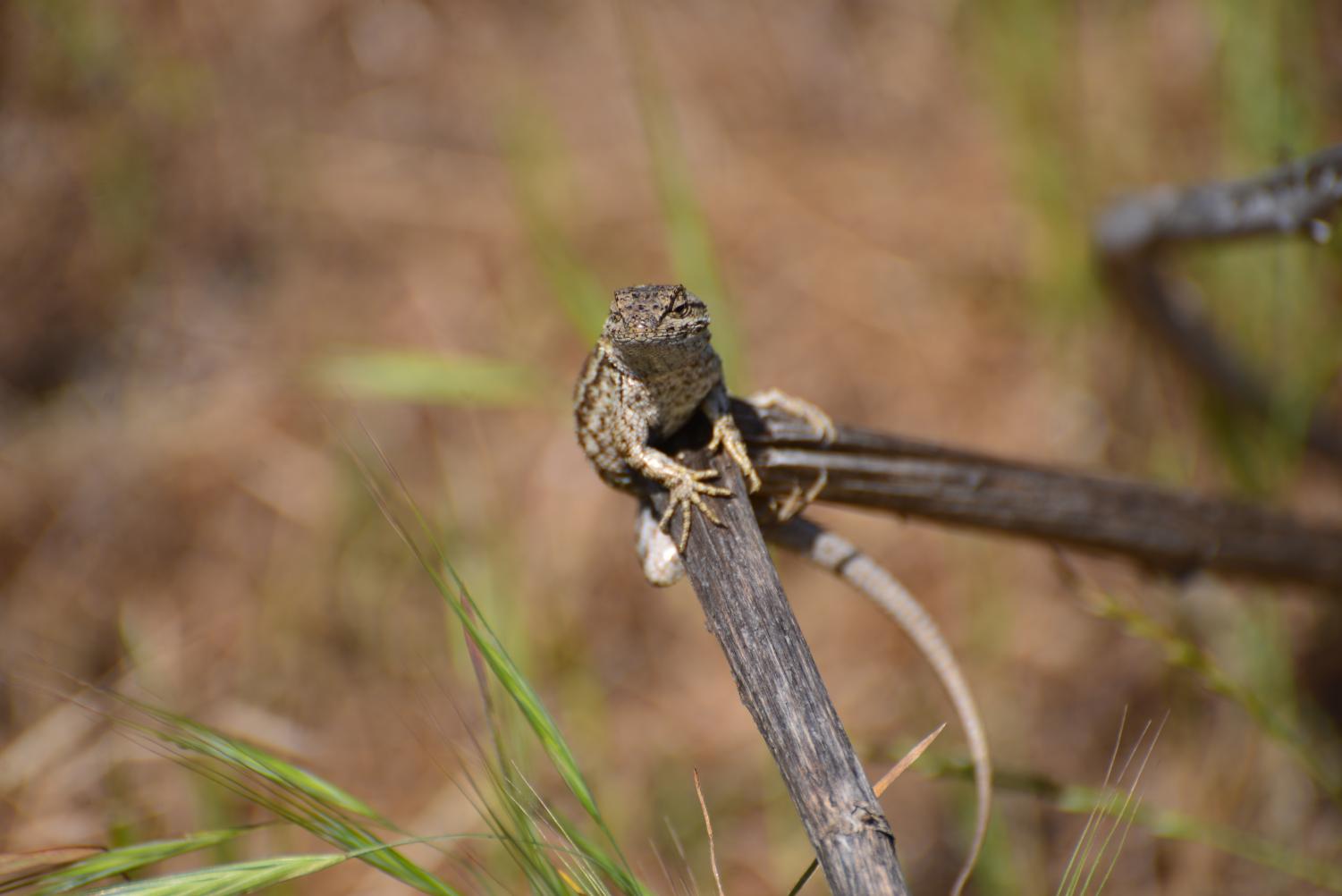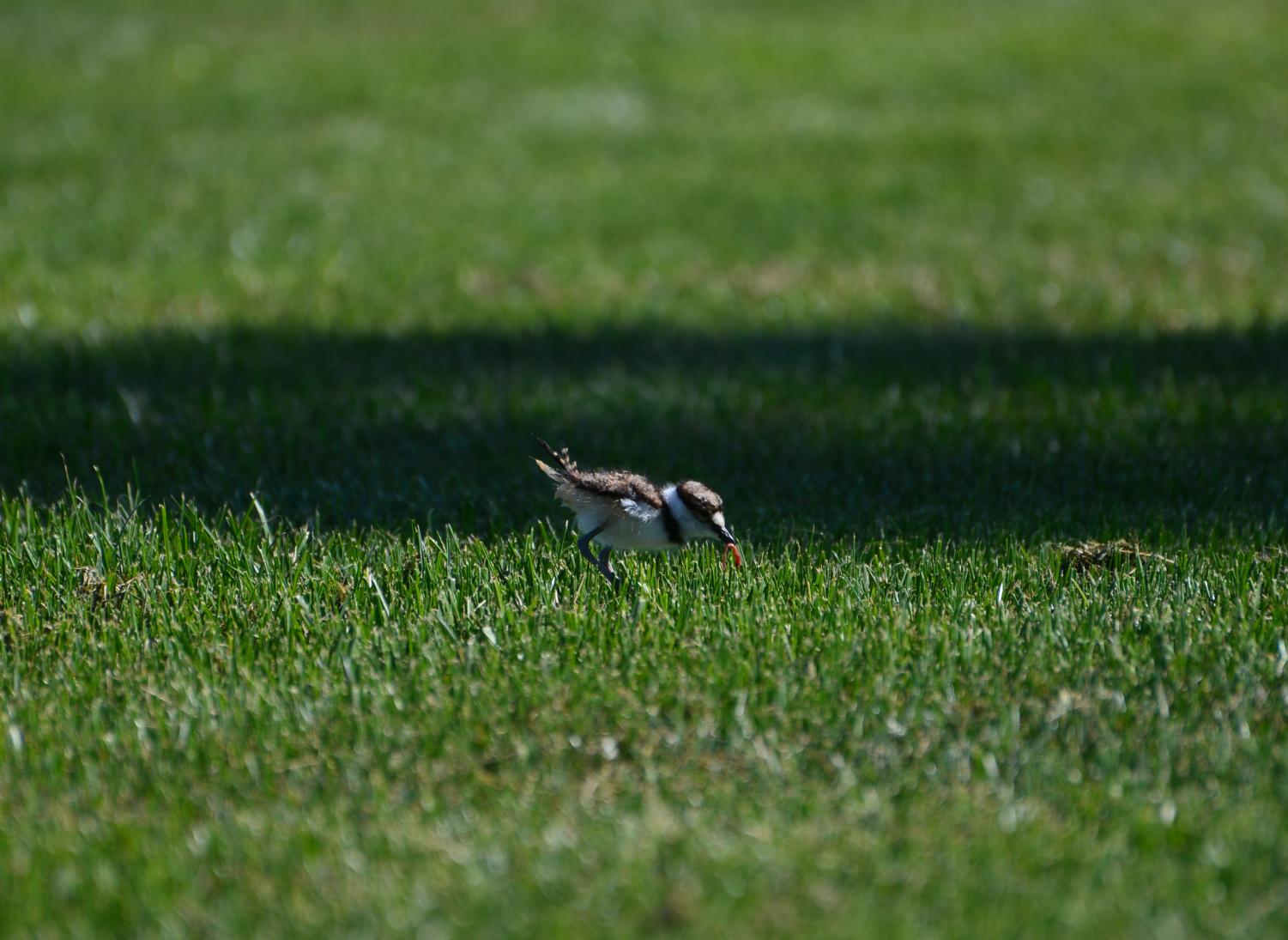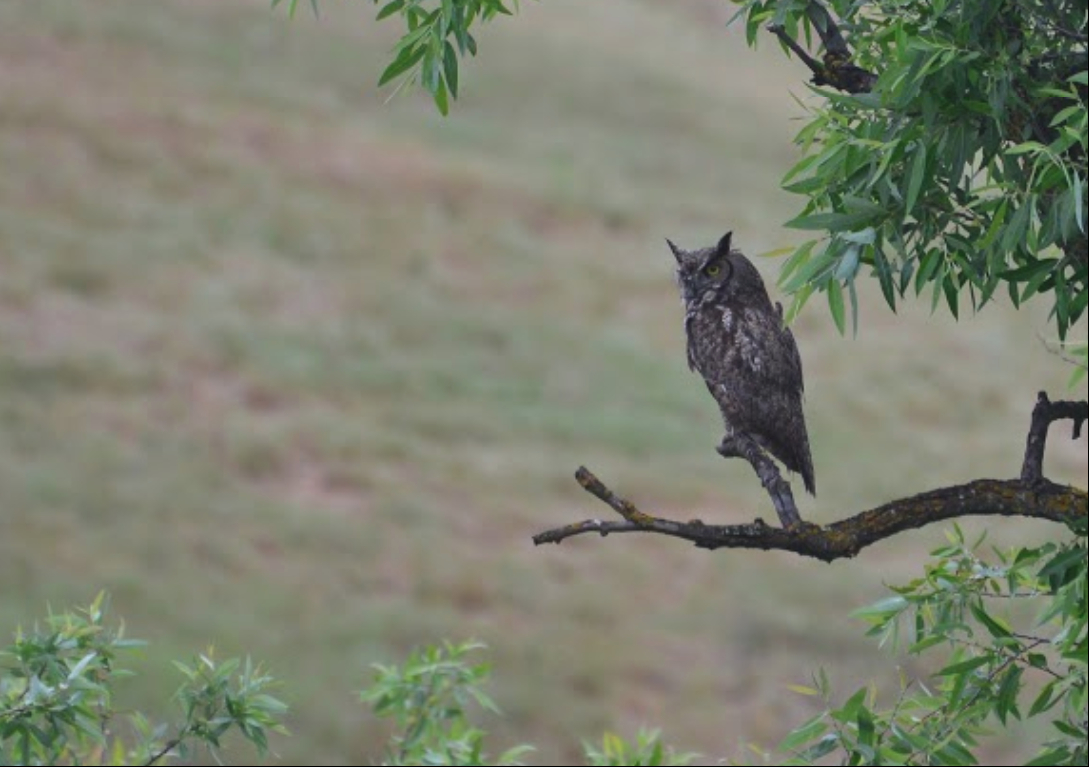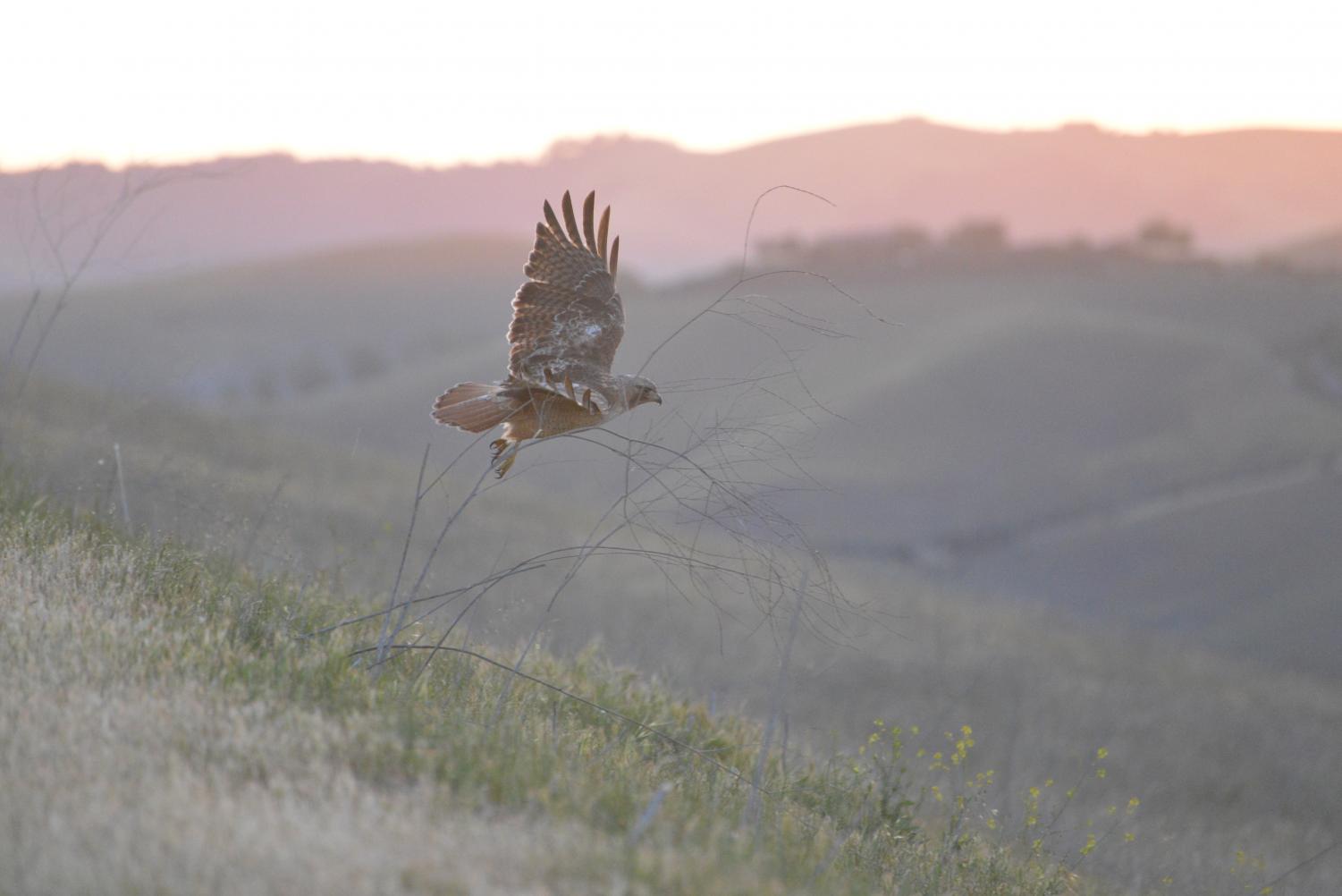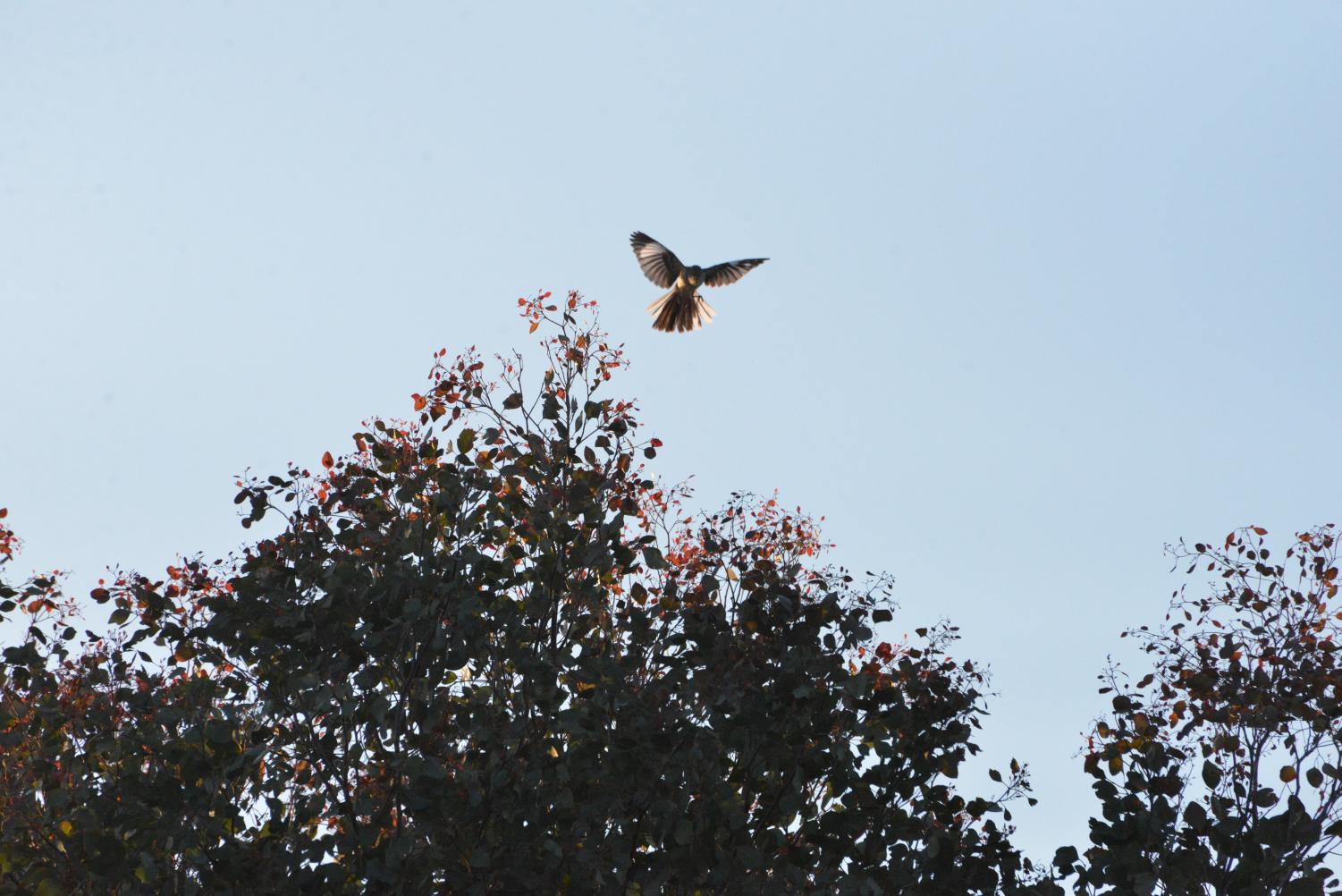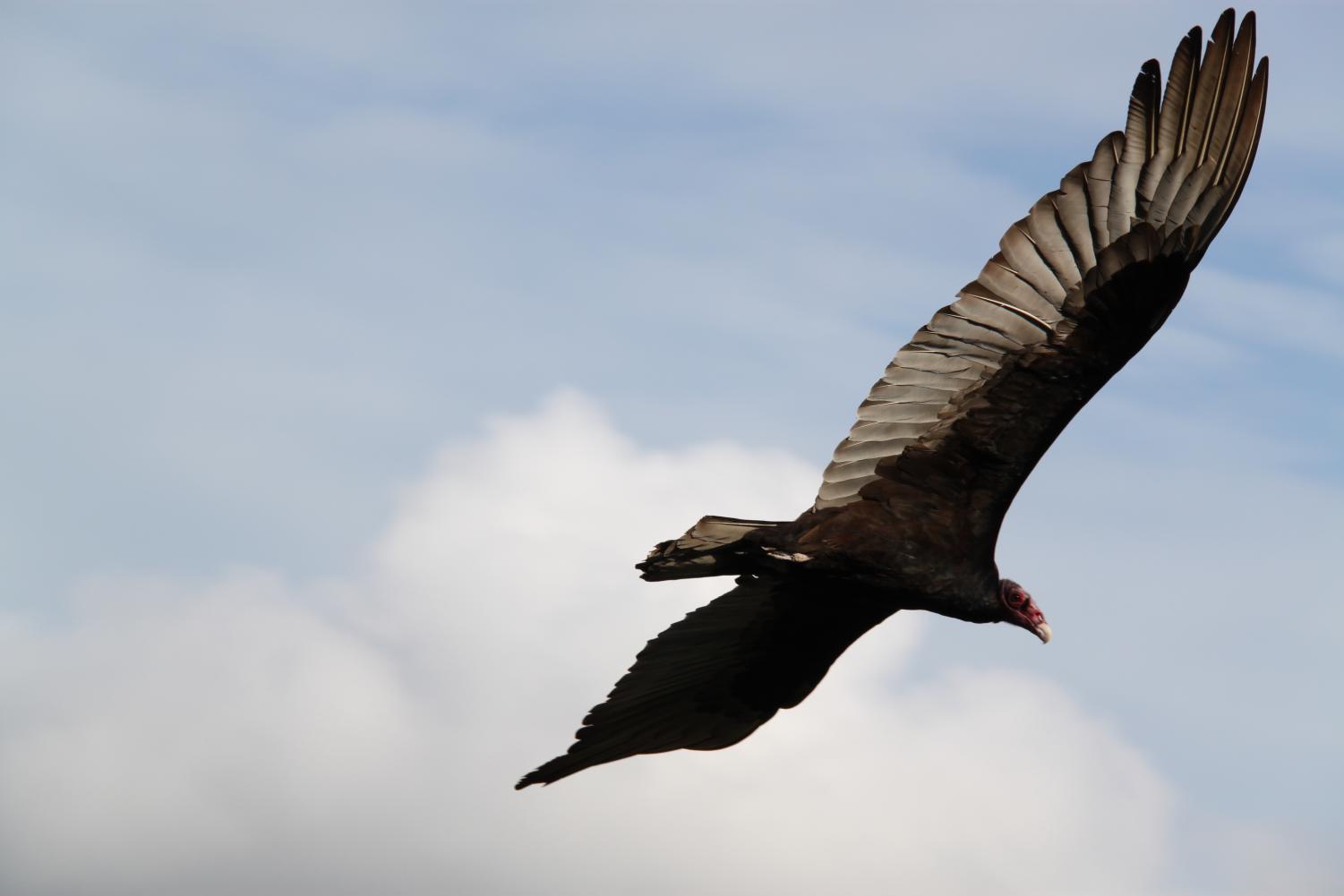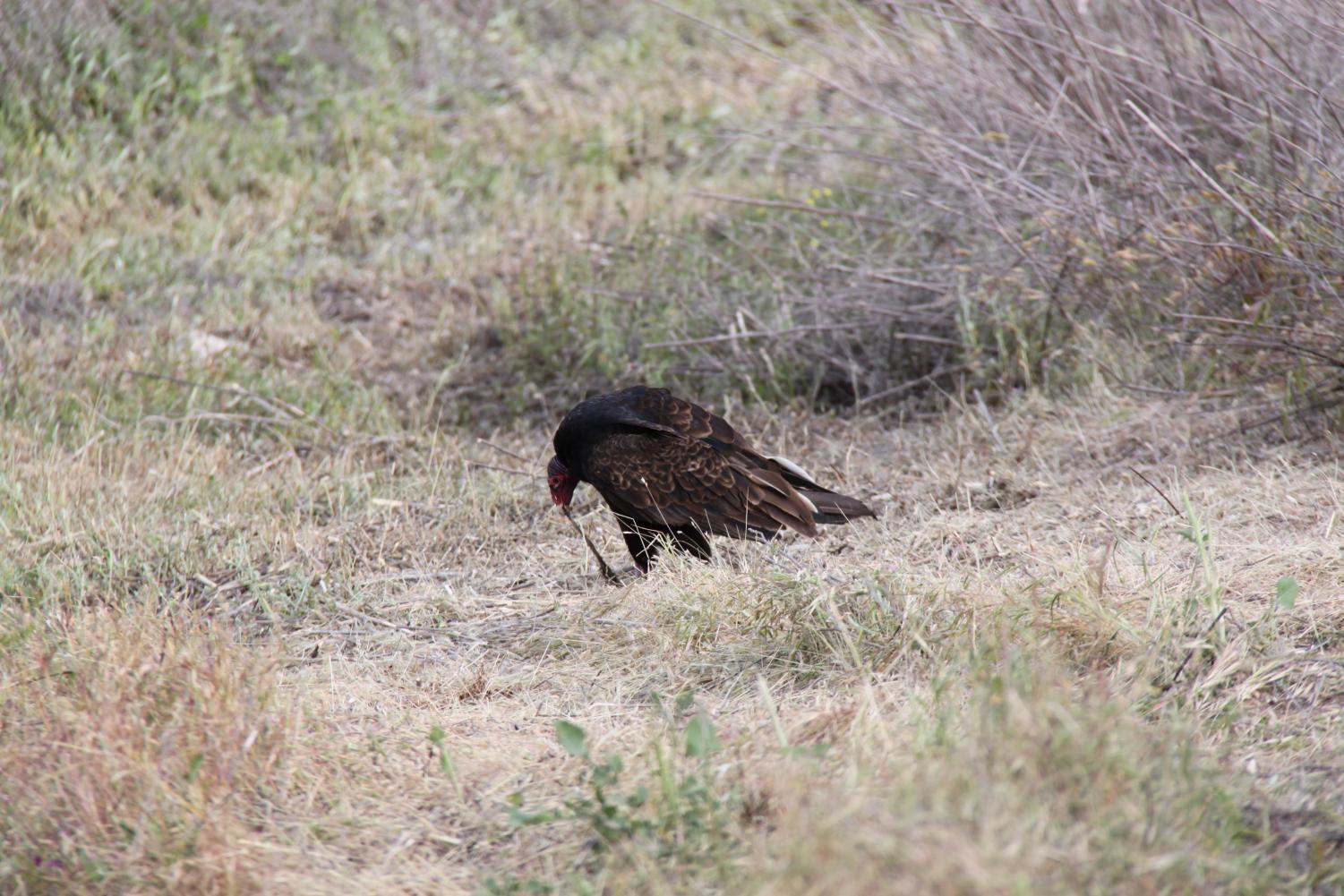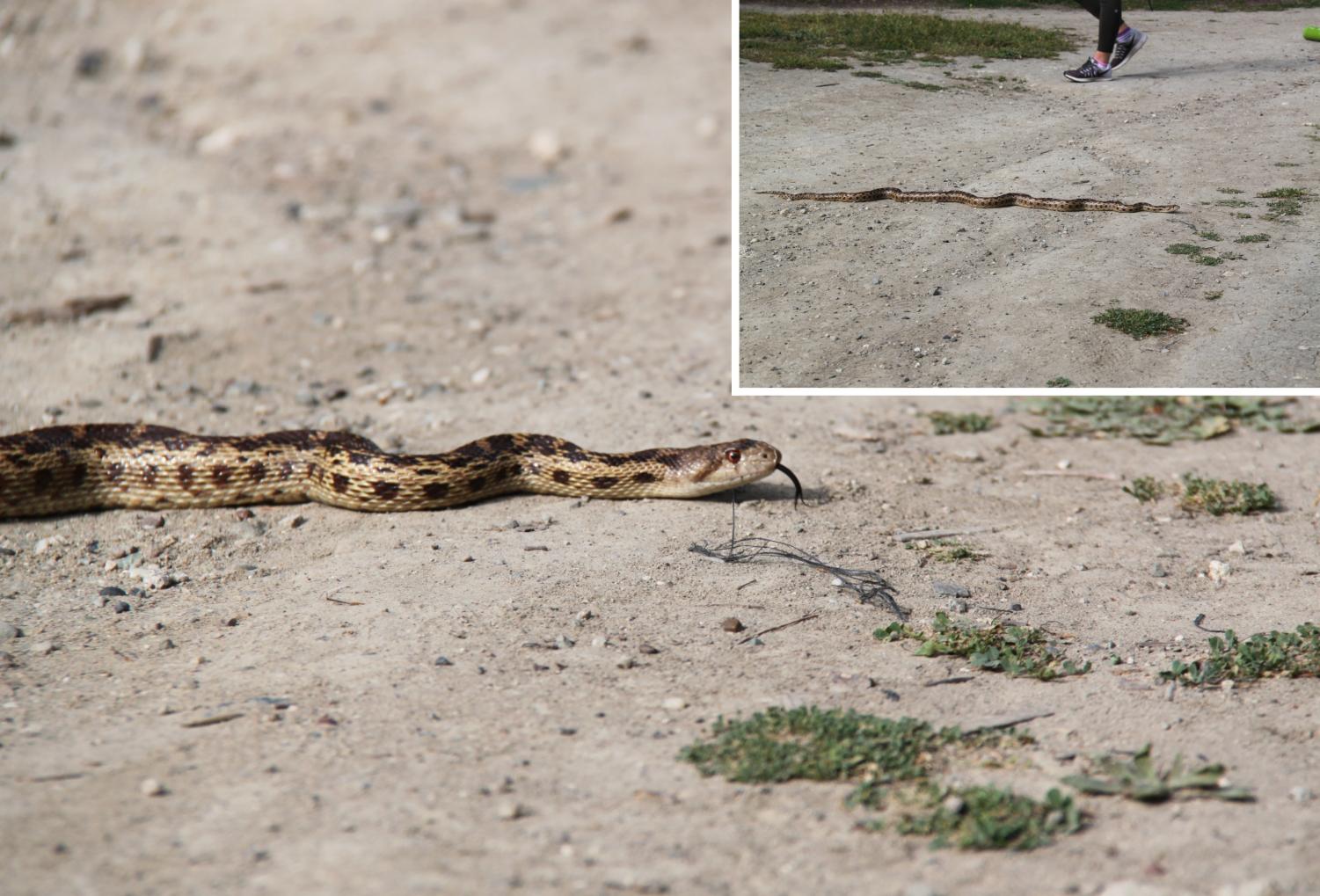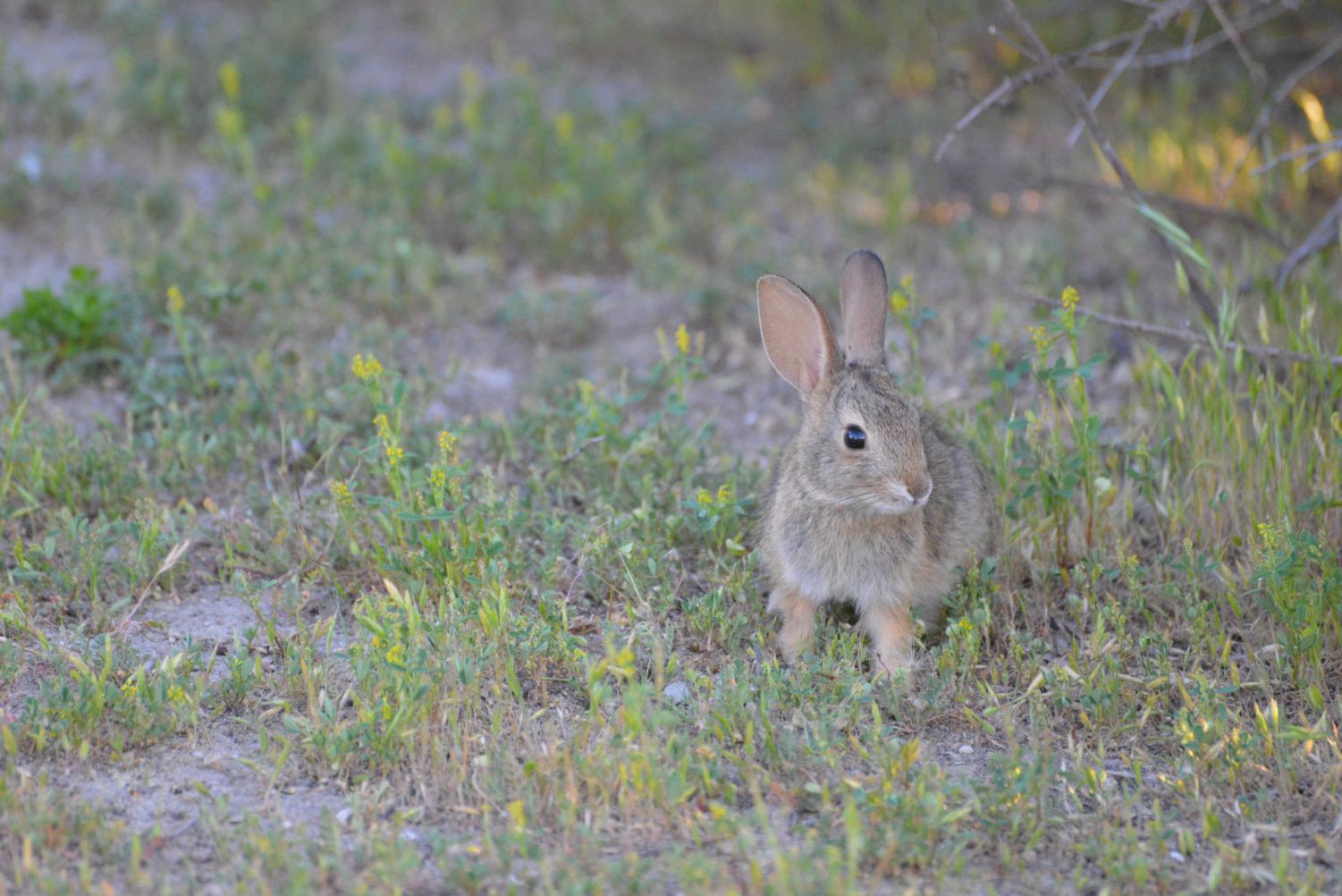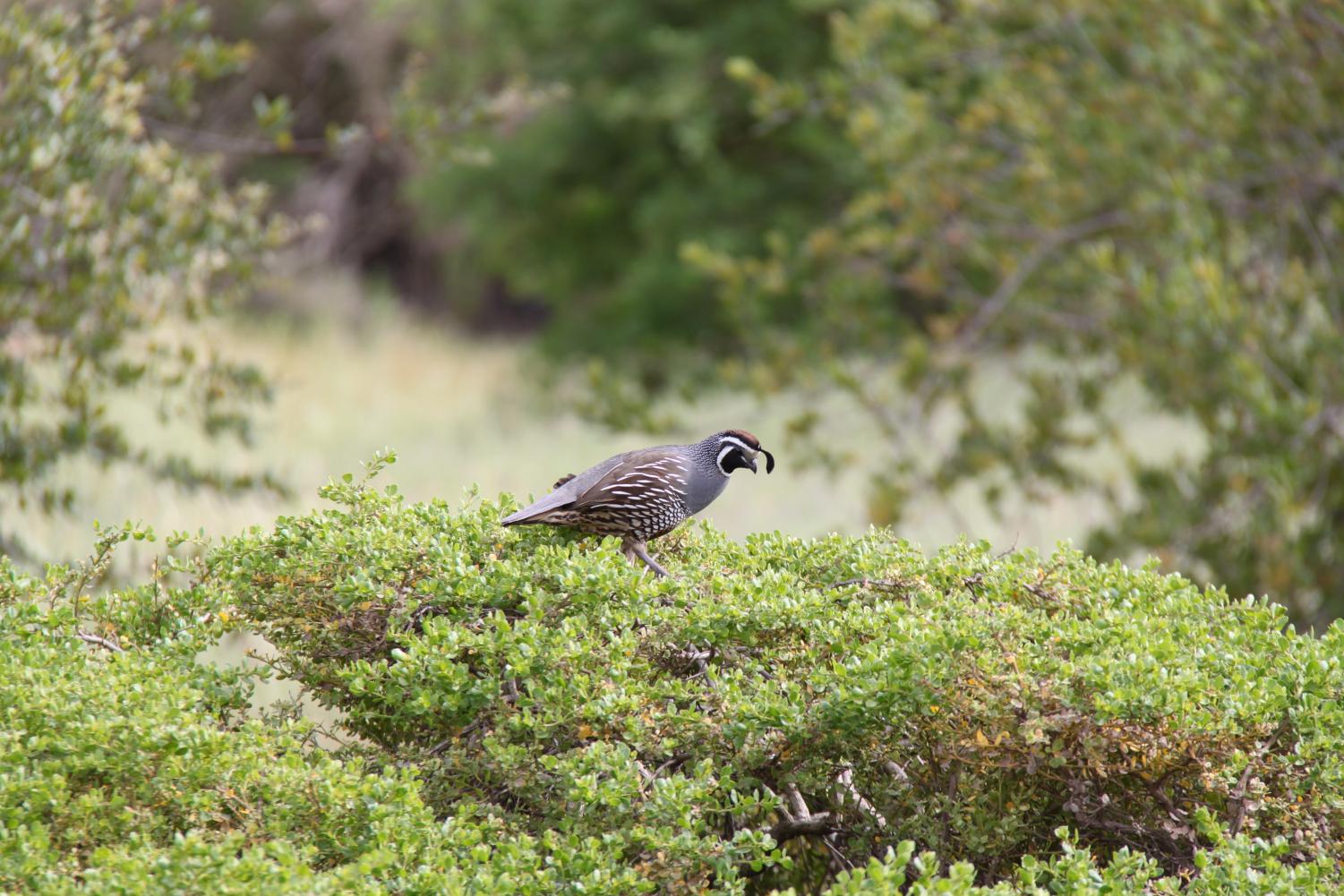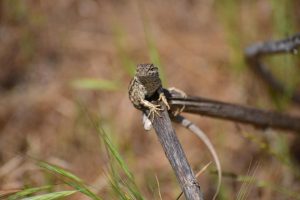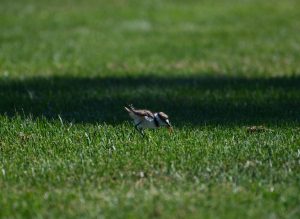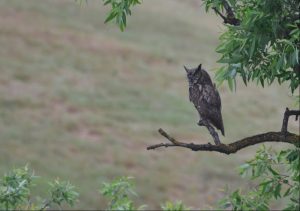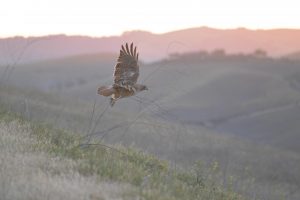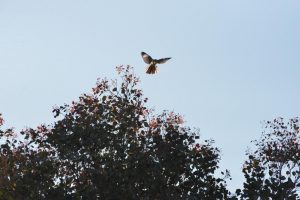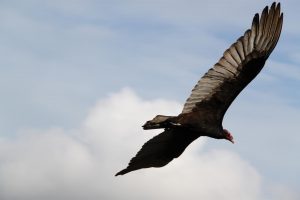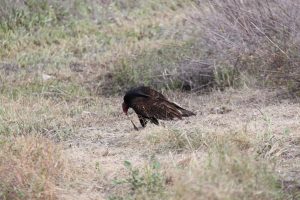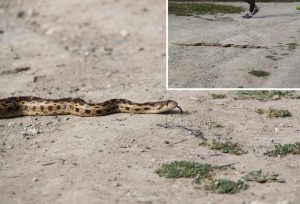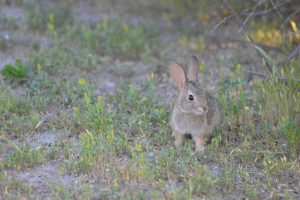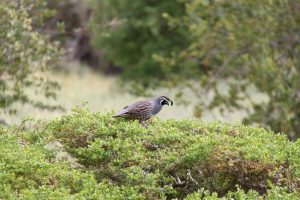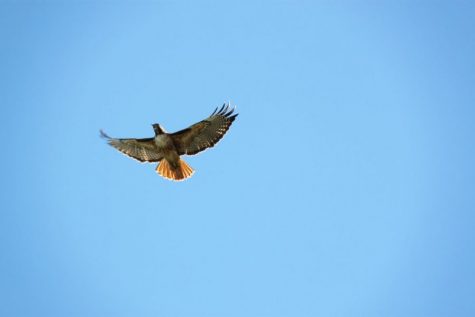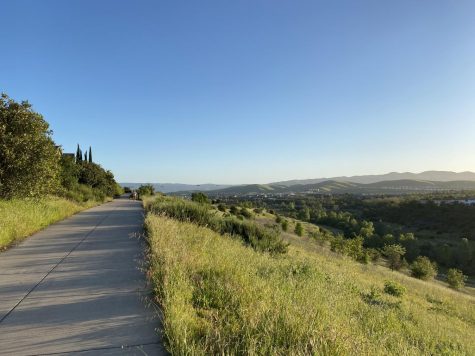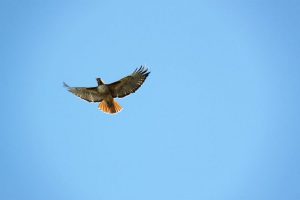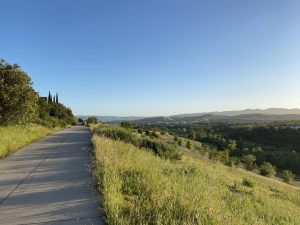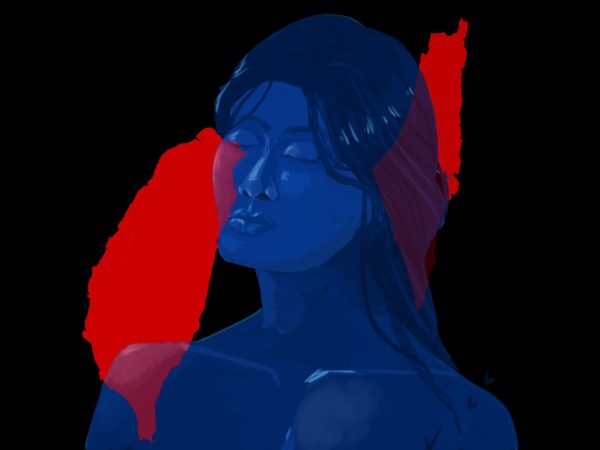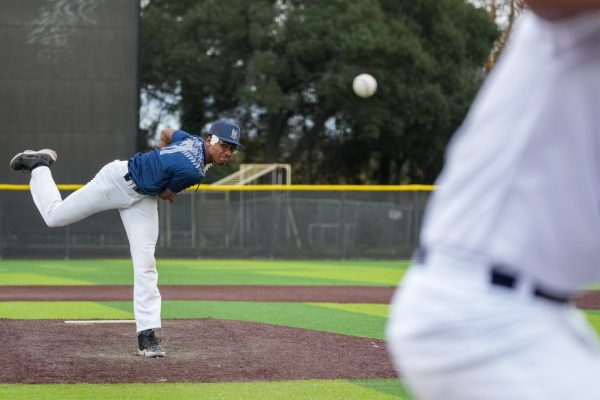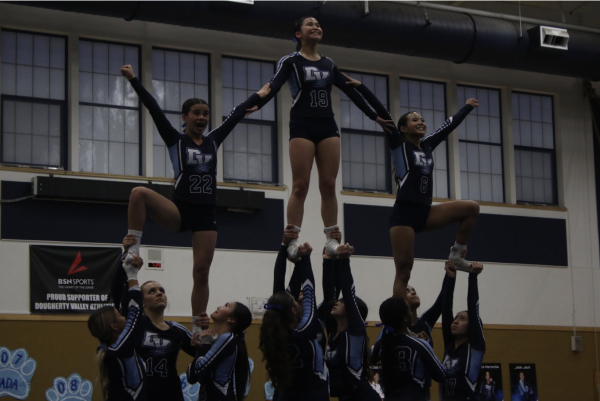Eva Shen, Editor in Chief
May 28, 2020
This male western fence lizard, distinguishable by the blue markings on his back, balances on a twig. You’ll sometimes see these lizards doing push-ups, to intimidate other males or attract females with their blue bellies.
A killdeer chick forages in the grass, hooking a worm in its beak. Named for their high-pitched chirps of kill-deer, this plover is recognizable by its black-and-white striped chest and red-ringed eye.
The great-horned, largest and one of the most common of owl species in North America, is famed for its ear tufts and golden eyes. Its talons are so strong that it would take 28 pounds of force to open them when clenched around prey.
A red-tailed hawk hunts at sunrise. This bird-of-prey hunts by riding thermal currents or sitting on high perches and scanning the land below. They can fly up to 120mph.
This male northern mockingbird perches on a tree and cycles through a dazzling medley of songs in his efforts to attract a female, bursting into the air every few moments with a wild flash of his white-splashed wings. Male mockingbirds can learn more than 200 songs in a lifetime.
The turkey vulture is often characterized as an evil, ugly personification of death. If you really think about it, though, they are probably the nicest carnivores to exist: they don’t even kill the animal they feed on, being physically unable to do so with their weak, chicken-like claws.
This turkey vulture feeds on a furred carcass. With powerful stomach acids that make them immune to otherwise toxic carrion, turkey vultures play an important ecological role by clearing dead bodies and reducing the spread of disease.
The nonvenomous pacific gopher snake is particularly active in the spring, when it searches for a mate. This snake can burrow, climb, and swim, and suffocates its prey by constriction.
This desert cottontail kit nibbles grass in the shadow of a bush. Grass is hard to digest, so cottontails eat their first set of waste. This second time around, the meal is easier to digest and the cottontail can absorb more nutrition.
This male California quail perches on a bush, under which his family is concealed. The black head plume for which quails are recognized are made of 6 overlapping feathers, which they use to impress mates. The longer the plume, the better.
Many who live here in San Ramon are delusional with the idea that we live in a boring place, stuck in the unappealing gray space between city and country, lacking the spirit of both. But San Ramon is actually a beautiful place to live: we have the hills, an abundance of hiking trails, Mt. Diablo in the distance, and all the lovely creatures that make these places their home. I’ve found that I am also blind to these wonders unless I search purposefully for them. But they’re always here, like they have been and will be.

